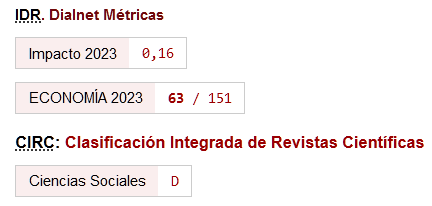Productividad y posicionamiento estructural en la industria de bienes de equipo española
Keywords:
industrial structure, productivity, capital goods, structural change, competitivenessAbstract
This paper analyses the structural position of the Spanish capital goods industry in order to tackle some of the structural factors that determine the productivity gap between this industry and that of our main competitors in the EU. We focus on a set of indicators that reveal strengths and weaknesses of its commercial insertion from three perspectives: at the technological level, from a quality point of view and regarding export sophistication. The evolution of these indicators shows a structural lag of this industry, even taking into account the existing productive diversity.
Downloads
References
Aiginger, K. (2000): Europe's position in quality competition, Enterprise DG Working Paper, September, European Commission, Enterprise Directorate General. Enlace
Aiginger, K. y Landesmann, M. (2002): Competitive economic performance, Research Reports, N° 291, November, The Vienna Institute for Comparative Economic Studies.
Artus, P. y Cette, G. (2004): Productivité et croissance, La Documentation Française, Paris.
Artus, P. y Ricoeur-Nicolai, N. (1999): Quel système de change entre les pays d'Europe centrale et la zone d'Union monétaire, Le courrier des pays de l'Est, N° 437, February. https://doi.org/10.2307/3502645
Cooper, C. (1995): Technology, manufactured exports and competitiveness, Global Forum on Industry. Perspectives for 2000 and beyond. Background Paper, September 26, UNIDO.
Economic Commission for Europe (2002): Technological activity in the ECE region during the 1990s, Economic Survey of Europe, 1, United Nations.
Fontagné, L. et al. (1999): Les produits de haute technologie: une source d'asymétrie en Europe, La lettre du CEPII, N° 179.
Gordo, E., Moral, E. et al. (2004): Algunas implicaciones de la ampliación para la economía española, Documentos ocasionales, 0403, Banco de España.
Graziani, G. (2002): Product quality upgrading in Central-Eastern countries and the coming EU enlargement, EU Enlargement to the CEECs: Trade Competition, Delocalisation of Production, and Effects on the Economies of the Union, Eds.: S. Baldone, F. Sdogati y L. Tajoli, Franco Angeli, Milan.
Lall, S. (2002): Linking FDI and technology development for capacity building and strategic competitiveness, Transnational Corporations, N° 3, December, Vol. 11.
Landesmann, M. (2002): Competitive economic performance, Research Reports, The Vienna Institute for Comparative Economic Studies.
Mickiewicz, T. (2001): Structural convergence between accession countries and the EU. Reforms, income levels or specialisation, Papeles del Este. Transiciones poscomunistas, N° 2, June.
Minondo, A. (2009): Especialización productiva y crecimiento en los países de renta media, Working Papers, 07/09, Instituto Complutense de Estudios Internacionales.
Radosevic, S. (1998): The product structure of Central and Eastern European trade: The emerging patterns of change and learning, Electronic Working Papers Series, N° 26, Science Policy Research Unit (SPRU), University of Sussex.
Van Ark, B., O'Mahony, M. et al. (2003): The policy framework: Does the EU need a productivity agenda?, EU productivity and competitiveness: An industrial perspective, Eds.: Anonymous, European Commission.
Downloads
Published
How to Cite
Issue
Section
License
This licence allows third parties to share (copy and redistribute the material in any medium or format) and adapt (remix, transform and create from the material for any purpose, including commercial purposes), provided that authorship and first publication in this journal (The Journal, DOI of the work) is acknowledged, a link to the licence is provided, and it is stated whether changes have been made to the work.







